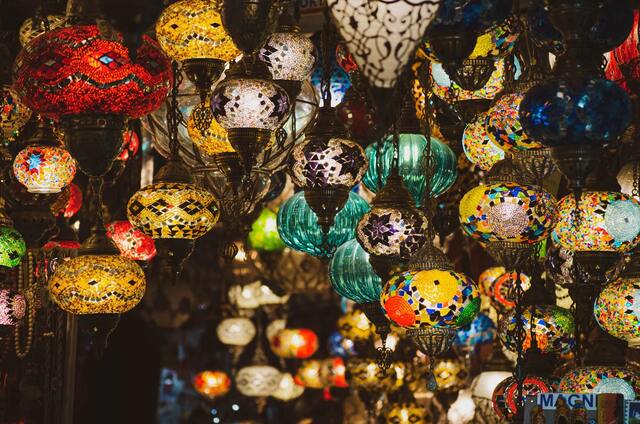The Maasai: Interesting Facts You Should Know

Unsplash: Imani Manyara
One word. Six letters. They are an East African tribe whose rich culture and tradition spans the vast safari they travel through. They are a pastoral indigenous group living in southern Kenya and northern Tanzania. And you probably heard of them or even seen them on the webs wearing this striking red clothing and beautiful jewelry. Now, can you take a guess of this fascinating community I’m talking about?
Dearest reader, if you don't know who I'm talking about or can't think of any more guesses or ideas about this special group of people, let me help you. This one word and six letters ethnic group is called the “Maasai” pronounced as ma-sa-eeh. They are recognized for their skills as formidable warriors and excellent cattle herders. Also, they are famous for their jumping dance. But what else do you know about the extraordinary Maasai? Read on and find out.
The Maasai Tribe are named after their language.
The Maa language is an Eastern Nilotic of the Nilo- language and it is spoken by the Maasai. The name Maasai literally means “one who speaks the Maa language.” Therefore, the Maasai people are actually named after the language they speak.
They have a semi-nomadic lifestyle.
Based on seasonal cycles, the Maasai community relocates both themselves and their animals from one location to another. This seasonal migration is important for the tribe because it ensures they will have access to fertile land for their livestock.
Drinking raw cattle blood is part of their diet.
This may sound very strange, but blood is part of the Maasai diet. The Maasai drink cattle blood, believing that the fresh cow blood will give them the nutrients and strength they need. The drinking of blood can happen on different occasions: when they are sick, after circumcision, right after giving birth, or to prevent hangovers after drinking.
The Maasai women build their homes.
The Maasai huts are built by the women of the Maasai tribe. The traditional huts are often quite small, circular or oval, and are built without any windows. For the walls, the women make them out of mud mixed with cow dung and sticks; the roof is built out of grass and sticks. But, building a hut could take several days to a few weeks, depending on the number of helpers and the availability of resources.
They dress in their own traditional clothing.
The most famous Maasai attire is known as the Shuka – a thick, woven, red blanket (with a blue or black checked pattern) that is used to wrap around the body. This piece of garment is sturdy and long-lasting, enough to protect the Maasai from severe weather.
There are different religions in the Maasai Tribe.
The Maasai have mostly been monotheistic, believing in only one God named Engai or Enkai. They know Engai to be kind and compassionate. They also believe that Enkai uses different colors to describe his emotions, such as red for anger and black or dark blue for happiness.
Many Maasai have recently converted to Christianity, while others have become Muslim.
The Maasai do not bury the dead.
Burying the dead may be done by some modern Maasai communities. However, the older generation of Maasai tribesmen and women do not bury their dead, except for the burial of their chief as a sign of respect.
The Maasai people have no funeral ceremonies for the dead, as they believe that burying the dead body is bad for the soil. Instead, they end up smearing the dead (body) with animal blood or fat and dumping it in the bushes for predators to scavenge, also known as Predator Burial.
Most Maasai men are married to more than one wife.
The elders of the Maasai Tribe arrange the marriages of the women in the community when they are still very young. When the Maasai woman gets married, she marries her husband along with his entire group of wives.
Usually, the Maasai wife is almost always much younger than the husband, which results in a large number of Maasai widows. Although, the widows are not expected to get married again.
More cattle means more wealth.
Cows play an important role in Maasai culture and lifestyle. They serve as a source of food, materials for clothing, and other necessities, as well as serve as an indicator of a man's wealth. In other words, a man's rank and wealth are determined by how many cows he owns. The more cows a man has = the wealthier he is.
They have a jumping dance called the “adamu.”
The "adamu" or jumping dance, is a ceremony performed by young Maasai men to show off their strength and ability in the hopes of attracting a wife.
Maasai children are not named until they turn 3 months old.
Babies are not given names until they are 3 months old in the Maasai culture because of the high infant death rate in the community. But when the kids receive their names, they go through a special naming ceremony called Enkipukonoto Eaji which translates to “coming out of the seclusion period.” The mothers and children are separated and kept apart before the ceremony, allowing their hair to grow out because the hair will be shaved off during Enkipukonoto Eaji to represent the child's new beginning.
There are sixteen sections in the Maasai community.
There are 16 iloshons or 16 sections in the Maasai community:
- Ildamat
- Ilpurko
- Ilkeekonyokie
- Iloitai
- Ilkaputiei
- Ilkankere
- Isiria
- Ilmoitanik
- Iloodokilani
- Iloitokitoki
- Ilarusa
- Ilmatatapato
- Ilwuasinkishu
- Kore
- Parakuyu
- Ilkisonko (or Isikirari)
Important Maasai You Should Know
- David Rudisha – world record holder for the 800 meters and middle distance runner
- Edward Sokoine – Prime Minister of Tanzania from 1977 to 1980 and 1983 to 1984
- Olekina Ledama – Maasai Education Discovery founder
- William Ole Ntimama – former Kenyan politician and Maa community leader
- Mbatian – prophet; the highest peak of Mount Kenya is named after him (Batian Peak)


